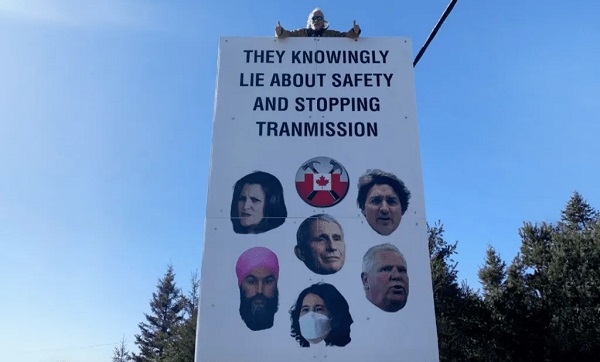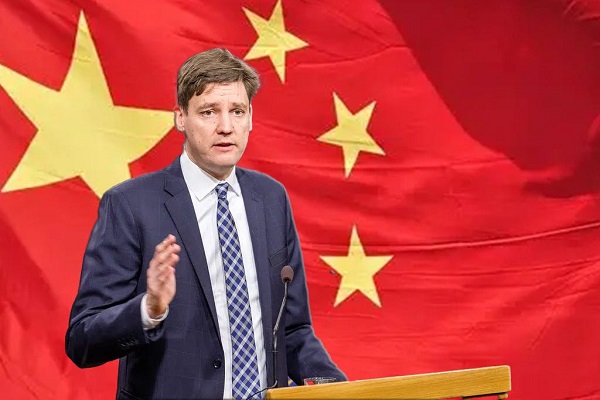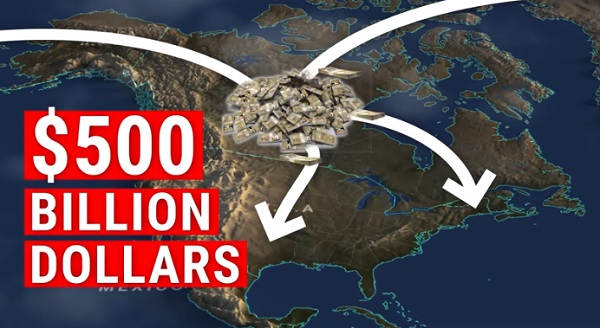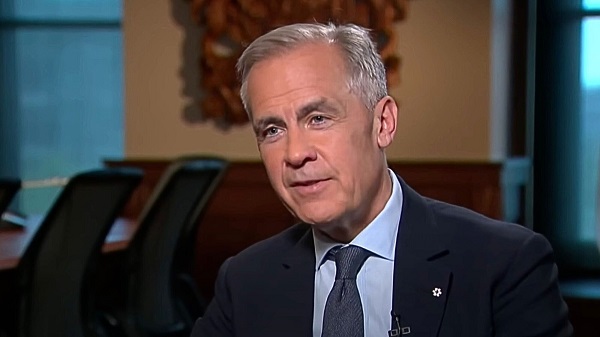Brownstone Institute
If We Only Knew

From the Brownstone Institute
BY
Last September, I released a video in which I explained my moral objection to the COVID-19 vaccine mandate being implemented by my employer, Western University. That video went viral.
Since its release, I have watched the video only a handful of times, and not once at my direction. I find it hard to watch, it being an acute reminder of the unfathomable world in which we now live.
But I have wondered, why did it resonate so much with people? Was it because I had the science right about the mRNA vaccines? Maybe.
Was it because I gave a good ethical argument against the mandates? I think so, but that surely isn’t the whole story.
Or was it something else?
I’ll let you think about that and offer my answer in a little bit.
One thing that video did is it instantly and irrevocably gave me outlier status. It put me on the outside of a system that has no tolerance for questioning or independent thought of any kind.
How many of you, at some point over the last two years, felt like an outlier, a misfit? How many of you felt like a foreigner within a new operating system in which conformity is the social currency, its reward the ability to keep your job, preserve your reputation, and avoid the censure of rebellious thought?
For its devoted followers, the stigma and bother of questioning that system is too costly, too inconvenient. But for you, it’s the price of conformity that is too high, and the need to question and, possibly resist, too hard to ignore.
It’s this social operating system that singled me out, expressed its intolerance for my nonconformist ways and, ultimately, did its best to string me up in the proverbial public square.
Until last September, I lived the quiet life of an academic, removed from the world of politics, podcasts and protests. I published in journals only a few colleagues ever read. I taught ethics, but it was always theoretical and, often, relied on the entertainment value of fantastical thought experiments like:
“What would you do if a trolley was barreling down a track toward five people inexplicably tied to it?”
Teaching ethics, I always felt, honestly, like a bit of a hypocrite, trying to envision what one would do if a crisis arose, or criticizing history’s moral villains. My work mattered, or so I told myself, but only in a big-picture way. There were no acute moral crises, no bioethics emergencies, as a good friend used to tease.
Not until last September, anyway, when all the theory culminated in what felt like the supreme ethical test. Faced with the decision to comply with my university’s COVID-19 vaccine mandate or refuse and lose my job, I chose the latter, for better or worse, and was efficiently terminated “with cause.”
I failed the test spectacularly according to my colleagues, our public health officials, Justin Trudeau, the Toronto Star, the National Post, the CBC, and even the NYU ethics professor who said “I wouldn’t pass her in my class.”
When I spoke at events at the height of the crisis, when almost unfathomably, we couldn’t even legally gather to do what we are doing today, I talked a lot about science and evidence, and why the mandates are unjustified and harmful. But I couldn’t imagine doing that now. And I don’t think that’s why you are here today.
We have all drawn our battle lines on that front and we aren’t seeing much movement across those lines. The pro-narrative position is alive and well. Conversions are uncommon and mass revelations unlikely.
Events are starting to impose vaccine passports once again and masking is returning. A Moderna plant is being built in Quebec…with production to beginin 2024.
And, honestly, I don’t think the situation in which we find ourselves was generated by a miscalculation of the data in the first place but by a crisis of the values and ideas that led to it.
So when I was invited to speak today, I started thinking about where you are these days, I wondered about your stories. What are your experiences of alienation and cancellation? What would you have done differently over the last two years if you could go back? What keeps you on the road less traveled? Are you ready to forgive?
So what I offer today are some thoughts on the themes of regret and endurance, thoughts on how we created the deep culture of silence that now stifles us, and what we can do now to move through it.
First, regret. Regret is, simply, the thought that it would have been better to do otherwise. If you give your friend expired milk that makes her sick, you might think “It would have been better first to check its expiry date.”
If you comply with COVID public health measures that end up causing harm, you might think “I should have questioned the lockdowns before McMaster Children’s Hospital reported a 300% increase in suicide attempts last fall, the vaccine rollout before the mandates came along.”
But the vast majority of us who should have known better, done better, didn’t. Why not?
There is no doubt that the government response to COVID is the largest public health disaster in modern history.
But what is interesting is not that the authorities demanded our compliance, that our sycophantic media was too lazy to demand the right evidence but that wesubmitted so freely, that we were so ready to trade freedom for the assurance of safety that we inverted the demands of civility to the point where we applaud sarcasm and cruelty.
And so the question that keeps me up at night is, how did we get to this place? Why couldn’t we see it coming?
I think part of the answer, the part that is hard to hear, hard to process, is that we did know. Or at least the information that would have allowed us to know, was available, hiding (we might say) in plain sight.
In 2009, Pfizer (the company that claims to “profoundly impact the health of Canadians” — no doubt) received a record-setting $2.3 billion fine for illegally marketing its painkiller Bextra and for paying kickbacks to compliant doctors.
At the time, Associate Attorney General Tom Perrelli said the case was a victory for the public over “those who seek to earn a profit through fraud.” Well, yesterday’s victory is today’s conspiracy theory. And, unfortunately, Pfizer’s misstep is not a moral anomaly in the pharmaceutical industry.
You might be familiar with some of the notable moments of the industry’s history of collusion and regulatory capture: the thalidomide disaster of the 50s and 60s, Anthony Fauci’s mismanagement of the AIDS epidemic, the Opioid epidemic and the SSRI crisis of the 90s, and that just scratches the surface.
The fact that drug companies are not moral saints should never have surprised us.
So we really can’t say “If we only knew” because the evidence was there; the collective ‘we’ did know.
So why didn’t that knowledge get the traction it deserved? Why did our blind adherence to “follow the science” lead us to be more unscientific than at, arguably, any other time in history?
Do you know the parable of the camel?
One cold night in the desert, a man is sleeping in his tent, having tied his camel outside. But as the night grows colder, the camel asks his master if he can put his head in the tent for warmth.
“By all means,” says the man; and the camel stretches his head into the tent.
A little while later, the camel asks if he may also bring his neck and front legs inside. Again, the master agrees.
Finally, the camel, who is half in, half out, says “I’m letting cold air in. May I not come inside?” With pity, the master welcomes him into the warm tent.
But once the camel comes inside, he says: “I think that there is not room for both of us here. It will be best for you to stand outside, as you are the smaller; there will then be room enough for me.
And with that, the man is forced outside of his tent.
How could this happen?
Well, it seems you can get people to do just about anything if you break the unreasonable down into a series of smaller, seemingly reasonable ‘asks.’
It is the humble petition of the camel — just to first put his head inside the tent — that is so modest, so pitiful, that it seems unreasonable, even inhumane, to refuse.
Isn’t this what we’ve seen over the last 2 years? It’s been a master class in how to influence a person’s behaviour one step at a time by encroaching a tiny bit, pausing, then starting from this new place and encroaching again all the while making us feel somehow beholden to those who are coercing us.
We got here because we consented to tiny encroachments that we never should have consented to, not because of the size but the nature of the ask. We got here not because we fail to see the harms we do or because we consider them to be a reasonable sacrifice for the sake of public good (though some surely do).
We got here because of our moral blindness, because we are temporarily unable to see the harms we do. How can little things like collateral damage and “autonomy” and “consent” possibly stack up against the deep, blinding devotion to the idea that we are “doing our part,” saving the human race?
Let’s go back to the camel for a moment.
One way to describe what the camel is doing is to say he is ‘nudging’ his master’s behaviour for his own purposes, in much the same way we have been nudged over the last two years.
I mean that literally. The COVID response of most major world governments was framed by the nudge paradigm, a form of behavioural psychology that uses the active engineering of choice to influence our behaviour in barely discernible ways. Based on the 2008 book Nudge by Richard Thaler and Cass Sunstein, the paradigm operates on 2 very simple ideas:
- Someone else, a supposed expert, will make better choices for you than you could make for yourself
- It is right for that person to make those choices for you
The real-world actualization of this model in the UK is MINDSPACE, a behavioural insights team (or “nudge unit”) composed largely of academics from the London School of Economics.
Some of the unsurprising insights of MINDSPACE include the fact that we are deeply influenced by the behaviours of those around us and by appeals to ego (i.e. we typically act in ways that make us feel better about ourselves proven, I think, by the virtue-signaling practices of masking and social media vaccine stickers.)
Our equivalent of MINDSPACE is Impact Canada, housed within the Privy Council Office, which not only tracks public behaviour and sentiment but plans ways to shape it in accordance with public health policies. This isn’t a secret. Theresa Tam bragged about it in an article in the Toronto Star last year.
These “nudge units” are composed of neuroscientists, behavioural scientists, geneticists, economists, policy analysts, marketers and graphic designers.
Members of Impact Canada include Dr. Lauryn Conway, whose work focuses on “the application of behavioural science and experimentation to domestic and international policy,” Jessica Leifer, a specialist in self-control and willpower, and Chris Soueidan, a graphic designer responsible for developing Impact Canada’s digital brand.
Slogans and hashtags (like “Do your part,” #COVIDvaccine and #postcovidcondition), images (of nurses donning masks that look like something from the movie Outbreak), and even the soothing Jade green colour on the “Get the facts about COVID-19 vaccines” fact-sheets are all products of Impact Canada’s research and marketing gurus.
Even the steady flow of more subtle images — on billboards and electronic traffic signs — normalizes the relevant behaviour through the subtle suggestion and justification of fear.
With greater than 90% vaccination rates, our nudge unit’s efforts are wildly successful.
But why were we so susceptible to being nudged in the first place? Aren’t we supposed to be the rational, critical thinking descendants of the Enlightenment? Aren’t we supposed to be scientific?
One of the great lessons of the last two years is just how much we are all affected by fear. The world’s nudge units masterfully manipulate our fears according to a precisely calculated cadence. But this is a dicey business.
If we feel helpless, fear appeals will make us defensive but, if we can be made to feel empowered, like there is something we can do to minimize the threat, our behaviours are highly moldable. We need to believe, for example, that the little mask we theatrically don at the entrance to the grocery store will fight a deadly virus, that the injection we take will save the human race (or at least give us the reputation for doing so).
But where did the idea that we should be manipulated in these ways come from?
None of it happened quickly and it didn’t start in 2020. Our moral blindness, our moral panic, is the culmination of a long-term cultural revolution and a devolution of our core institutions. As Antonio Gramsci, founder of the Italian Communist party, proclaimed, to achieve socialism’s triumph in the West, we must “Capture the culture.” And what he envisioned to do so was what Rudi Dutschke described in 1967 as a “long march through the institutions.”
Gramsci’s followers created, as Allan Bloom wrote in The Closing of the American Mind, the powerful cultural left. With the universities as their laboratories, the West’s radical leftists for decades taught students the virtues of relativism and groupthink.
These students graduated, worked their way up their respective professional ladders, molding each of the institutions we have been trained to trust: academia, medicine, media, government, even the judiciary. Molding them with the guiding ideology of the “politics of intent” which assumes that, if your intentions are noble and your compassion boundless, then you are virtuous, even if your actions ultimately lead to disaster on a colossal scale.
There is no accountability in the politics of intent. No apology. No autonomy. No individuality.
This is what’s behind social activism, progressivism, wokeism, neoliberalism, purity politics and the cancel culture that seems to run roughshod over reason in the frenzied rush to protect “acceptable” ideas.
And this is why language came to be the ammunition of the COVID war: because it is the most expedient and effective capture-the-culture tool. Think of everything from “Self-isolate” to “covidiot” to, of course, “Anti-vaxxer,” the linguistic scalpel that carved society up at its joints. Even the fact that “COVID” came to be capitalized (in the US, Canada and Australia, in particular) has an effect on the weight we give it.
These insidious shifts in our language help to entrench a social operating system that has proven its ability to reshape society without limitation, that led to my termination, that upheld the suspension of Dr. Crystal Luchkiw for giving a COVID vaccine exemption to a high-risk patient, that made Tamara Lich and Artur Pawlowski political prisoners, that saw narrative spin at its finest as our Prime Minister testified (under oath) at the Public Order Emergency Commission in Ottawa yesterday, that demands amnesty for the (apparently) innocently ignorant, and that brought us all together today.
If this is the cause of our moral blindness, how do we cure it? How do we ‘wake people’ up to the harms of what we are doing?
As the Belgian psychologist Mattias Desmet says, jarring awake an acolyte of this system is like trying to wake someone up from a hypnotic state. If you try to do so by giving arguments about the effects of pandemic measures on children starving in India, for example, it will be futile because you are relying on ideas to which they give no psychological weight. Like the hypnotized person who feels nothing when a surgeon makes a cut, evidence that runs counter to the narrative is outside their focus of attention.
I have, personally, yet to hear of a case of someone being convinced of the absurdity of the COVID narrative on the basis of reason or evidence alone. I worked for months with the Canadian Covid Care Alliance to provide evidence-based information about COVID but I didn’t see any real traction until I made a video in which I cried.
Why did you cry when you watched that video? Why do tears well up when we meet at the gas station or while walking the dogs?
The answer, I think, is that none of this is about evidence and reason. “Effective versus ineffective” was never the point. It’s about feelings, on both sides. Feelings that justify our purity obsession, feelings (for many of you here today, I suspect) that “something is rotten in the state of Denmark,” as Hamlet’s Marcellus quipped, and that we don’t matter.
Do facts matter? Of course they do. But facts, alone, will never answer the questions we really care about. Let me say that again. FACTS, ALONE, WILL NEVER ANSWER THE QUESTIONS WE REALLY CARE ABOUT.
The real COVID war is not a battle over what is true, what counts as information, what it means to #followthescience; it’s a battle over what our lives mean and, ultimately, whether we matter. It’s a battle over the stories we tell.
Do we keep telling the seductive story of statism (which is what happens when we ask the state to assume authority over all spheres of our lives)? Do we outsource our thinking and our decision-making to the state that says:
- Don’t worry about providing for your family, we offer welfare;
- Don’t worry about taking care of each other when sick, we’ll give you free health care;
- Don’t worry about caring for your aging parents, there’s long-term care for that;
- And now insurance and overdraft and lines of credit, and even perfect student loan forgiveness?
Do we tell the story that our individual lives don’t matter, that we are expendable for the sake of the greater good, that technology will purify us, that if only we elect the right leaders, all our problems will be solved?
Or do we tell a better story? A story according to which our leaders are just a reflection of ourselves, that making ourselves wiser and stronger and more virtuous will always be better than relying on the state to make us healthy, safe and good, a story according to which we keep reaching for what we all deeply crave: meaning, mattering, and connecting with the humanity in others. This, I think, is a much more compelling story and the one we need to tell as we continue to fight.
So, where do we go from here?
Much has been written about the moral qualities of today’s outliers. In an eloquent letter to the unvaccinated narrated by Del Bigtree: “If Covid were a battlefield, it would still be warm with the bodies of the unvaccinated.”
Very true, but lying there alongside them would be anyone who refuses to outsource their thinking, who refuses to wallow in the comfort of willful ignorance, and who keeps trudging along through the darkness without a lantern to light the way.
Moral endurance is a problem these days. Empathy is low, and not just on the pro-narrative side. I don’t know about you but the feeling I can’t quite ignore or reconcile these days, something I am not proud of as an ethicist or a human being, is a palpable feeling of being numb. Numb to the repetition of history’s atrocities, numb to the laziness of the compliant who helped to create the world in which we now live, numb to inauthentic pleas for amnesty.
Those who have been speaking out are growing tired and we don’t even know what round of the fight we are in. With the injury of time, even the most devout can fall away, and what once seemed a noble, unrelinquishable goal can start to lose its force in the haze of shifting crises. And it will be a long time before the choir of humanity sings our praises, if it ever does.
But those who can persist are the ones, I believe, who will one day lead us out of this moral catastrophe, those who can remind us that more rules, restrictions, and signals of our apparent virtue are just a veil over our moral emptiness.
You might wonder, what if I’m ignored? What if I’m not brave? What if I fail?
The truth is, we all fail… every day. It’s unavoidable. But I think the greatest human failure is to pretend that we are gods, saints, or perfect heroes, that we can be made pure and invincible.
We all want to be the hero in our own story, of course — to slay the villains around us. But it’s turning out that the real villains are living inside us and growing stronger every day.
The true COVID war won’t be fought across the aisles of our parliaments, in our newspapers or even in the boardrooms of Big Pharma.
It will be fought between estranged sisters, between friends uninvited from Christmas dinner, between distanced spouses trying to see something vaguely familiar in the person sitting across from them. It will be fought as we struggle to protect our children and give our parents dignity in their last days. It will be fought in our souls.
Is COVID amnesty possible? Of course it is… if we hold onto our willful blindness, if we whitewash our mistakes. It is possible if I forget that within the last year, my prime minister called me a racist, that police came to my door, that I stayed home while friends sanctimoniously went to restaurants without me, that I lost rights that only the truly unreflective enjoyed, and that I am trying to teach my 2 year-old how to play and imagine and hope while the world crumbles around her.
But to “forgive and forget” will only solidify our brokenness. We need to look our mistakes in the face. We need to say our sorries. And we need to mean it.
We are going to be in this war a while longer and there will likely be more casualties than we can fathom in this moment. As Pulitzer Prize-winning poet Mark Strand wrote, “…. if only we knew how long the ruins would last we would never complain.”
In the meantime, we tell our stories. We tell our stories because this is what we’ve done for thousands of years to make sense of our fears, to communicate with people from other tribes, to give our ancestors some degree of immortality and to teach our children. We tell our stories because we believe a cry in the dark will eventually be heard. These stories are what set a crisis in context. And sometimes a crisis can be productive.
In 1944, Jean Paul Sartre wrote an article for the Atlantic about those who fought against the occupation of France. Sartre begins the article with an apparent contraction:
“Never were we freer,” he wrote, “than under the German occupation. We had lost all our rights, and first of all our right to speak. They insulted us to our faces….The deported us en masse…. And because of all this we were free.”
Free? Really?!
For Sartre, it isn’t our circumstances that control us; it is how we interpret them. Sartre said they were unified because they all experienced the same fears, the same loneliness, the same uncertainty about the future.
And it was the courage of those who resisted suffering amidst all of this that led them out of it.
Leading us out of this will be up to those who, for some reason, choose resilience over helplessness, whose need to question is as natural as breathing, whose voice rings out in the silence, and who can see the humanity in others through the thick fog of shame and hatred.
It will be these outliers — people like you who were brave enough to be here today — that will make us look back on this moment in history and say, “Never were we freer.”
Brownstone Institute
FDA Exposed: Hundreds of Drugs Approved without Proof They Work

From the Brownstone Institute
By
The US Food and Drug Administration (FDA) has approved hundreds of drugs without proof that they work—and in some cases, despite evidence that they cause harm.
That’s the finding of a blistering two-year investigation by medical journalists Jeanne Lenzer and Shannon Brownlee, published by The Lever.
Reviewing more than 400 drug approvals between 2013 and 2022, the authors found the agency repeatedly ignored its own scientific standards.
One expert put it bluntly—the FDA’s threshold for evidence “can’t go any lower because it’s already in the dirt.”
A System Built on Weak Evidence
The findings were damning—73% of drugs approved by the FDA during the study period failed to meet all four basic criteria for demonstrating “substantial evidence” of effectiveness.
Those four criteria—presence of a control group, replication in two well-conducted trials, blinding of participants and investigators, and the use of clinical endpoints like symptom relief or extended survival—are supposed to be the bedrock of drug evaluation.
Yet only 28% of drugs met all four criteria—40 drugs met none.
These aren’t obscure technicalities—they are the most basic safeguards to protect patients from ineffective or dangerous treatments.
But under political and industry pressure, the FDA has increasingly abandoned them in favour of speed and so-called “regulatory flexibility.”
Since the early 1990s, the agency has relied heavily on expedited pathways that fast-track drugs to market.
In theory, this balances urgency with scientific rigour. In practice, it has flipped the process. Companies can now get drugs approved before proving that they work, with the promise of follow-up trials later.
But, as Lenzer and Brownlee revealed, “Nearly half of the required follow-up studies are never completed—and those that are often fail to show the drugs work, even while they remain on the market.”
“This represents a seismic shift in FDA regulation that has been quietly accomplished with virtually no awareness by doctors or the public,” they added.
More than half the approvals examined relied on preliminary data—not solid evidence that patients lived longer, felt better, or functioned more effectively.
And even when follow-up studies are conducted, many rely on the same flawed surrogate measures rather than hard clinical outcomes.
The result: a regulatory system where the FDA no longer acts as a gatekeeper—but as a passive observer.
Cancer Drugs: High Stakes, Low Standards
Nowhere is this failure more visible than in oncology.
Only 3 out of 123 cancer drugs approved between 2013 and 2022 met all four of the FDA’s basic scientific standards.
Most—81%—were approved based on surrogate endpoints like tumour shrinkage, without any evidence that they improved survival or quality of life.
Take Copiktra, for example—a drug approved in 2018 for blood cancers. The FDA gave it the green light based on improved “progression-free survival,” a measure of how long a tumour stays stable.
But a review of post-marketing data showed that patients taking Copiktra died 11 months earlier than those on a comparator drug.
It took six years after those studies showed the drug reduced patients’ survival for the FDA to warn the public that Copiktra should not be used as a first- or second-line treatment for certain types of leukaemia and lymphoma, citing “an increased risk of treatment-related mortality.”
Elmiron: Ineffective, Dangerous—And Still on the Market
Another striking case is Elmiron, approved in 1996 for interstitial cystitis—a painful bladder condition.
The FDA authorized it based on “close to zero data,” on the condition that the company conduct a follow-up study to determine whether it actually worked.
That study wasn’t completed for 18 years—and when it was, it showed Elmiron was no better than placebo.
In the meantime, hundreds of patients suffered vision loss or blindness. Others were hospitalized with colitis. Some died.
Yet Elmiron is still on the market today. Doctors continue to prescribe it.
“Hundreds of thousands of patients have been exposed to the drug, and the American Urological Association lists it as the only FDA-approved medication for interstitial cystitis,” Lenzer and Brownlee reported.
“Dangling Approvals” and Regulatory Paralysis
The FDA even has a term—”dangling approvals”—for drugs that remain on the market despite failed or missing follow-up trials.
One notorious case is Avastin, approved in 2008 for metastatic breast cancer.
It was fast-tracked, again, based on ‘progression-free survival.’ But after five clinical trials showed no improvement in overall survival—and raised serious safety concerns—the FDA moved to revoke its approval for metastatic breast cancer.
The backlash was intense.
Drug companies and patient advocacy groups launched a campaign to keep Avastin on the market. FDA staff received violent threats. Police were posted outside the agency’s building.
The fallout was so severe that for more than two decades afterwards, the FDA did not initiate another involuntary drug withdrawal in the face of industry opposition.
Billions Wasted, Thousands Harmed
Between 2018 and 2021, US taxpayers—through Medicare and Medicaid—paid $18 billion for drugs approved under the condition that follow-up studies would be conducted. Many never were.
The cost in lives is even higher.
A 2015 study found that 86% of cancer drugs approved between 2008 and 2012 based on surrogate outcomes showed no evidence that they helped patients live longer.
An estimated 128,000 Americans die each year from the effects of properly prescribed medications—excluding opioid overdoses. That’s more than all deaths from illegal drugs combined.
A 2024 analysis by Danish physician Peter Gøtzsche found that adverse effects from prescription medicines now rank among the top three causes of death globally.
Doctors Misled by the Drug Labels
Despite the scale of the problem, most patients—and most doctors—have no idea.
A 2016 survey published in JAMA asked practising physicians a simple question—what does FDA approval actually mean?
Only 6% got it right.
The rest assumed that it meant the drug had shown clear, clinically meaningful benefits—such as helping patients live longer or feel better—and that the data was statistically sound.
But the FDA requires none of that.
Drugs can be approved based on a single small study, a surrogate endpoint, or marginal statistical findings. Labels are often based on limited data, yet many doctors take them at face value.
Harvard researcher Aaron Kesselheim, who led the survey, said the results were “disappointing, but not entirely surprising,” noting that few doctors are taught about how the FDA’s regulatory process actually works.
Instead, physicians often rely on labels, marketing, or assumptions—believing that if the FDA has authorized a drug, it must be both safe and effective.
But as The Lever investigation shows, that is not a safe assumption.
And without that knowledge, even well-meaning physicians may prescribe drugs that do little good—and cause real harm.
Who Is the FDA Working for?
In interviews with more than 100 experts, patients, and former regulators, Lenzer and Brownlee found widespread concern that the FDA has lost its way.
Many pointed to the agency’s dependence on industry money. A BMJ investigation in 2022 found that user fees now fund two-thirds of the FDA’s drug review budget—raising serious questions about independence.

Yale physician and regulatory expert Reshma Ramachandran said the system is in urgent need of reform.
“We need an agency that’s independent from the industry it regulates and that uses high-quality science to assess the safety and efficacy of new drugs,” she told The Lever. “Without that, we might as well go back to the days of snake oil and patent medicines.”
For now, patients remain unwitting participants in a vast, unspoken experiment—taking drugs that may never have been properly tested, trusting a regulator that too often fails to protect them.
And as Lenzer and Brownlee conclude, that trust is increasingly misplaced.
- Investigative report by Jeanne Lenzer and Shannon Brownlee at The Lever [link]
- Searchable public drug approval database [link]
- See my talk: Failure of Drug Regulation: Declining standards and institutional corruption
Republished from the author’s Substack
Brownstone Institute
Anthony Fauci Gets Demolished by White House in New Covid Update

From the Brownstone Institute
By
Anthony Fauci must be furious.
He spent years proudly being the public face of the country’s response to the Covid-19 pandemic. He did, however, flip-flop on almost every major issue, seamlessly managing to shift his guidance based on current political whims and an enormous desire to coerce behavior.
Nowhere was this more obvious than his dictates on masks. If you recall, in February 2020, Fauci infamously stated on 60 Minutes that masks didn’t work. That they didn’t provide the protection people thought they did, there were gaps in the fit, and wearing masks could actually make things worse by encouraging wearers to touch their face.
Just a few months later, he did a 180, then backtracked by making up a post-hoc justification for his initial remarks. Laughably, Fauci said that he recommended against masks to protect supply for healthcare workers, as if hospitals would ever buy cloth masks on Amazon like the general public.
Later in interviews, he guaranteed that cities or states that listened to his advice would fare better than those that didn’t. Masks would limit Covid transmission so effectively, he believed, that it would be immediately obvious which states had mandates and which didn’t. It was obvious, but not in the way he expected.

And now, finally, after years of being proven wrong, the White House has officially and thoroughly rebuked Fauci in every conceivable way.
White House Covid Page Points Out Fauci’s Duplicitous Guidance
A new White House official page points out, in detail, exactly where Fauci and the public health expert class went wrong on Covid.
It starts by laying out the case for the lab-leak origin of the coronavirus, with explanations of how Fauci and his partners misled the public by obscuring information and evidence. How they used the “FOIA lady” to hide emails, used private communications to avoid scrutiny, and downplayed the conduct of EcoHealth Alliance because they helped fund it.
They roast the World Health Organization for caving to China and attempting to broaden its powers in the aftermath of “abject failure.”
“The WHO’s response to the COVID-19 pandemic was an abject failure because it caved to pressure from the Chinese Communist Party and placed China’s political interests ahead of its international duties. Further, the WHO’s newest effort to solve the problems exacerbated by the COVID-19 pandemic — via a “Pandemic Treaty” — may harm the United States,” the site reads.
Social distancing is criticized, correctly pointing out that Fauci testified that there was no scientific data or evidence to support their specific recommendations.
“The ‘6 feet apart’ social distancing recommendation — which shut down schools and small business across the country — was arbitrary and not based on science. During closed door testimony, Dr. Fauci testified that the guidance ‘sort of just appeared.’”
There’s another section demolishing the extended lockdowns that came into effect in blue states like California, Illinois, and New York. Even the initial lockdown, the “15 Days to Slow the Spread,” was a poorly reasoned policy that had no chance of working; extended closures were immensely harmful with no demonstrable benefit.
“Prolonged lockdowns caused immeasurable harm to not only the American economy, but also to the mental and physical health of Americans, with a particularly negative effect on younger citizens. Rather than prioritizing the protection of the most vulnerable populations, federal and state government policies forced millions of Americans to forgo crucial elements of a healthy and financially sound life,” it says.
Then there’s the good stuff: mask mandates. While there’s plenty more detail that could be added, it’s immensely rewarding to see, finally, the truth on an official White House website. Masks don’t work. There’s no evidence supporting mandates, and public health, especially Fauci, flip-flopped without supporting data.
“There was no conclusive evidence that masks effectively protected Americans from COVID-19. Public health officials flipped-flopped on the efficacy of masks without providing Americans scientific data — causing a massive uptick in public distrust.”
This is inarguably true. There were no new studies or data justifying the flip-flop, just wishful thinking and guessing based on results in Asia. It was an inexcusable, world-changing policy that had no basis in evidence, but was treated as equivalent to gospel truth by a willing media and left-wing politicians.
Over time, the CDC and Fauci relied on ridiculous “studies” that were quickly debunked, anecdotes, and ever-shifting goal posts. Wear one cloth mask turned to wear a surgical mask. That turned into “wear two masks,” then wear an N95, then wear two N95s.
All the while ignoring that jurisdictions that tried “high-quality” mask mandates also failed in spectacular fashion.

And that the only high-quality evidence review on masking confirmed no masks worked, even N95s, to prevent Covid transmission, as well as hearing that the CDC knew masks didn’t work anyway.
The website ends with a complete and thorough rebuke of the public health establishment and the Biden administration’s disastrous efforts to censor those who disagreed.
“Public health officials often mislead the American people through conflicting messaging, knee-jerk reactions, and a lack of transparency. Most egregiously, the federal government demonized alternative treatments and disfavored narratives, such as the lab-leak theory, in a shameful effort to coerce and control the American people’s health decisions.
When those efforts failed, the Biden Administration resorted to ‘outright censorship—coercing and colluding with the world’s largest social media companies to censor all COVID-19-related dissent.’”
About time these truths are acknowledged in a public, authoritative manner. Masks don’t work. Lockdowns don’t work. Fauci lied and helped cover up damning evidence.
If only this website had been available years ago.
Though, of course, knowing the media’s political beliefs, they’d have ignored it then, too.
Republished from the author’s Substack
-

 COVID-195 hours ago
COVID-195 hours agoOntario man launches new challenge against province’s latest attempt to ban free expression on roadside billboards
-

 Energy13 hours ago
Energy13 hours agoThis Canada Day, Celebrate Energy Renewal
-

 Business1 day ago
Business1 day agoWhile China Hacks Canada, B.C. Sends Them a Billion-Dollar Ship Building Contract
-

 Alberta1 day ago
Alberta1 day agoSo Alberta, what’s next?
-

 Alberta4 hours ago
Alberta4 hours agoAlberta Next Takes A Look At Alberta Provincial Police Force
-

 Bjorn Lomborg1 day ago
Bjorn Lomborg1 day agoThe Physics Behind The Spanish Blackout
-

 Alberta6 hours ago
Alberta6 hours agoCanadian Oil Sands Production Expected to Reach All-time Highs this Year Despite Lower Oil Prices
-

 Business8 hours ago
Business8 hours agoPotential For Abuse Embedded In Bill C-5






